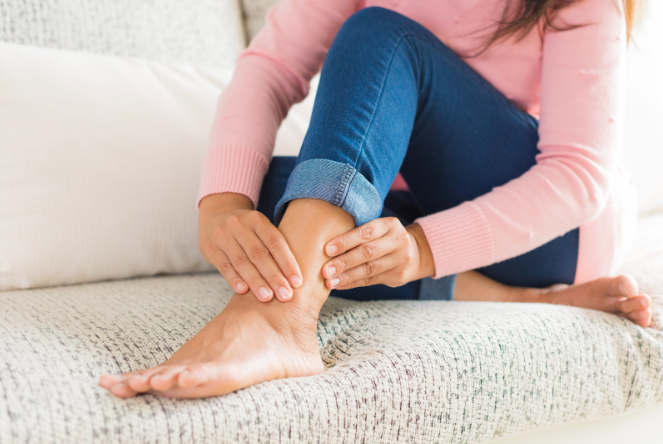Staying active is vital for maintaining overall health, but without proper joint care, an energetic lifestyle can lead to chronic pain, injuries, and long-term mobility issues. Joints—where two bones meet—play a critical role in every movement, from walking to weightlifting. Fortunately, with the right habits and guidance from an orthopedic clinic, you can protect your joints while maintaining your active routine.
The Role of an Orthopedic Clinic in Joint Health
An Orthopedic Clinic specializes in diagnosing, treating, and preventing musculoskeletal disorders, including issues involving bones, muscles, ligaments, and joints. These clinics not only offer surgical treatments but also provide preventive care and education on injury avoidance. Whether you’re an athlete or a fitness enthusiast, working with orthopedic specialists ensures you understand the biomechanics of your body and how to protect it during physical activity.
Warm Up and Cool Down: Non-Negotiables for Joint Safety
One of the most overlooked aspects of joint protection is proper warm-up and cool-down routines. Before engaging in any physical activity, warming up increases blood flow to muscles and lubricates joints, preparing them for movement. Gentle stretching and dynamic movements like arm circles or light jogging can reduce the risk of sprains and strains.
After exercising, a cool-down routine that includes static stretches helps reduce muscle stiffness and joint stress. Skipping these routines may lead to overuse injuries or delayed-onset muscle soreness that affects joint mobility.
Strength Training for Joint Support
Joints are stabilized and protected by the muscles surrounding them. Building strength through targeted resistance training can relieve pressure on joints by allowing muscles to absorb more impact. For example, strengthening your quadriceps and hamstrings improves knee joint stability, while a strong core reduces spinal stress.
Orthopedic clinics often recommend low-impact resistance exercises such as swimming, resistance band workouts, and Pilates. These provide muscle-building benefits without placing excessive strain on the joints.
Maintain a Healthy Weight
Excess body weight puts added stress on weight-bearing joints like the hips, knees, and ankles. According to many orthopedic specialists, each extra pound can place up to four additional pounds of pressure on the knees during activities like walking. Over time, this can contribute to joint degeneration and increase the risk of osteoarthritis.
Working with professionals at an orthopedic clinic can help you create a sustainable weight management plan that includes safe physical activity, dietary guidance, and behavior modification.
Choose Joint-Friendly Activities
Not all exercises are created equal when it comes to joint health. High-impact activities such as running on hard surfaces, contact sports, or repetitive motion routines can cause wear and tear. Instead, consider joint-friendly options like cycling, swimming, or elliptical training. These exercises keep you fit while minimizing impact.
If you’re recovering from an injury or living with a chronic condition like arthritis, an orthopedic clinic can help tailor a personalized fitness program that aligns with your physical abilities and long-term goals.
Pay Attention to Body Mechanics
Proper body mechanics during exercise or daily movement is key to preventing injury. Whether you’re lifting weights or picking up a grocery bag, using correct posture and alignment ensures that joints aren’t overstressed. For example, bending at the knees instead of the waist protects your lower back and knee joints.
Orthopedic clinics often offer physical therapy or biomechanics assessments that help identify poor movement patterns and correct them with guided training.
Rest and Recovery: Let Your Joints Heal
Rest is just as important as movement in an active lifestyle. Overtraining without adequate rest can lead to joint inflammation, tendonitis, or stress fractures. Giving your joints time to recover helps them rebuild stronger and more resilient.
Listen to your body’s signals. Persistent pain, swelling, or reduced range of motion should not be ignored. Early intervention from an orthopedic clinic can prevent minor issues from becoming major problems.
Use Proper Gear and Footwear
Supportive footwear, braces, and joint sleeves can provide added protection, especially during high-intensity workouts. Shoes with good arch support and shock absorption reduce the impact on knees and ankles, while compression gear may help stabilize joints and enhance circulation.
An orthopedic specialist can recommend specific gear based on your activity level, joint health, and past injuries.
Conclusion
Joint health is essential for anyone leading an active lifestyle. While exercise is a powerful tool for wellness, it must be approached mindfully. By incorporating strength training, maintaining healthy weight, practicing proper movement, and consulting professionals at an orthopedic clinic, you can enjoy your activities for years to come—without sacrificing your joint health. Prevention is key, and the earlier you implement these tips, the better your long-term joint resilience will be

